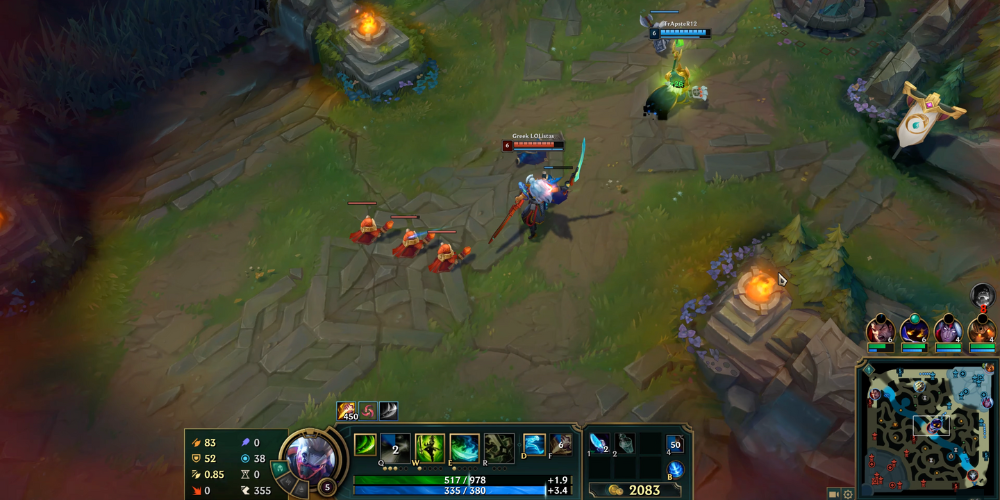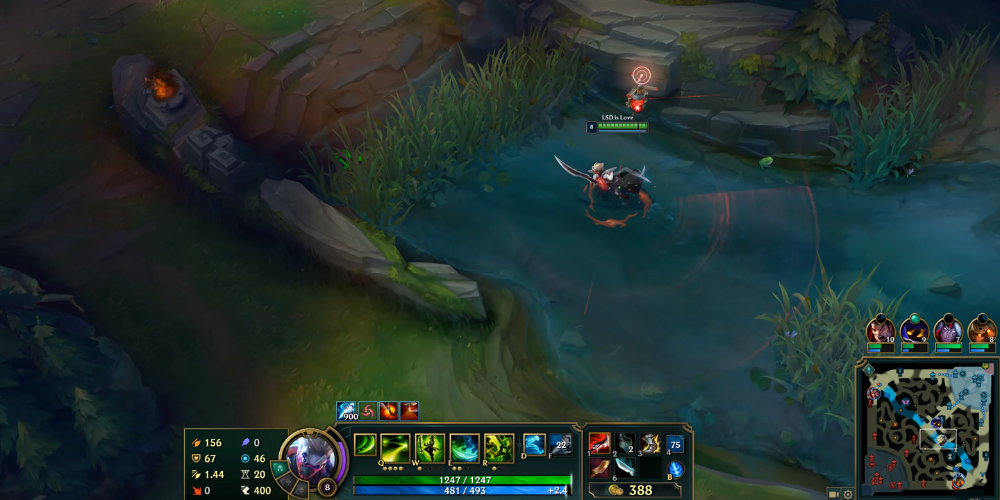League of Legends: Understanding Different Champion Roles and Effective Tactics
Apr-04-2024

League of Legends (LoL), a highly strategic multiplayer online battle arena (MOBA) game, demands not only quick reflexes and tactical prowess but also a deep understanding of various champion roles and effective game tactics. Each role has specific responsibilities and plays a crucial part in achieving victory. This article explores the different champion roles within the game and discusses some strategic methods to utilize these roles effectively, helping players elevate their gameplay.
1. The Top Lane: The Lonely Warrior
The top lane is often considered one of the most isolated parts of the map, which typically features tanky bruisers or champions with the capacity to sustain themselves. Champions in this role are expected to be self-reliant and capable of both dealing with and absorbing significant amounts of damage.
Key Champions: Examples include Darius, Garen, and Fiora, known for their robustness and dueling capabilities.
Tactics: Success in the top lane involves a mix of aggressive plays and cautious positioning, maintaining control over the lane while being ready to join your team for pivotal fights. Mastering the art of when to push the lane and when to join your team can make or break the game.
2. The Jungle: Master of Ambush and Support

The jungle moves across the map, clearing jungle camps and assisting lanes through ganks—surprising opponents by quickly appearing in their lane to provide an advantage to their teammates.
Key Champions: Lee Sin, Elise, and Rek'Sai are notable for their strong ganking potential and mobility.
Tactics: Effective jungling requires keen map awareness and strategic vision control to not only support your lanes but also keep track of the opposing jungler. Successful junglers control the tempo of the game, securing objectives like dragons and heralds that provide team-wide advantages.
3. The Mid Lane: The Center of Action
Mid-layers hold significant influence over the game due to their location in the center of the map, which allows them to reach other parts of the map relatively quickly. This role is usually filled by mages or assassins who excel at burst damage.
Key Champions: Champions like Ahri, Syndra, and Zed who can swiftly eliminate threats.
Tactics: Mid-learners must balance farming (killing minions for gold and experience) with harassing the opposing laner and roaming to other lanes to aid teammates. Vision control and timely roams to assist side lanes or secure jungle objectives are critical for maintaining dominance.
4. The Bot Lane: A Duo of Power

The bot lane is unique as it is the game’s only two-champion lane, which consists of the AD Carry (ADC) and the Support.
4.1 AD Carry: The Glass Cannon
The ADC, typically reliant on attack damage, focuses on dealing sustained damage from a distance. Fragile yet powerful, these champions require good positioning to be effective in team fights.
Key Champions: Jinx, Ashe, and Caitlyn, each possessing immense late-game damage potential.
Tactics: ADCs need to concentrate on accumulating gold through minion waves and avoiding unnecessary engagements, especially early in the game when they're most vulnerable. Positioning is key in skirmishes and full-scale team fights.
4.2 Support: The Protector and Initiator
Supports assist not only their ADC but also the whole team through healing, shielding, providing vision, and engaging or disengaging fights.
Key Champions: Thresh, Janna, and Leona offer various forms of crowd control and protection.
Tactics: Supports play a crucial role in controlling the lane’s flow and vision around key areas of the map, including dragon. Effective use of wards to safeguard the ADC and monitor enemy movements, along with timely intervention in team engagements, are vital duties of proficient support.
5. Effective Team Strategies

Understanding the roles leads to better strategy formulation in matches. It’s essential to know how these roles interact with one another to devise a winning strategy.
Objective Control: Securing objectives like turrets, dragons, and the Baron is essential. Teams need to time their pushes and know when to fall back. Control over these objectives translates to better resource allocation, enabling stronger assaults and defenses.
Spatial Awareness: Each player needs to be aware of their positioning, especially in relation to the enemies’ whereabouts. Knowing when to engage and when to retreat is paramount, and missteps in positioning can lead to significant setbacks.
Communication: Perhaps the most critical aspect of team play is effective communication. Quick, clear exchanges of information allow for coordinated strikes, timely saves, and better control over the game’s tempo. Use pings and quick messages to keep your team updated.
Conclusion
This is a complex game that involves intricate knowledge of champion roles and effective gameplay tactics. Players who take the time to understand the strengths and weaknesses of their chosen roles and communicate effectively with teammates are more likely to secure victories and enjoy the game. Whether you are a new player or looking to refine your strategies, mastering these aspects is essential.







